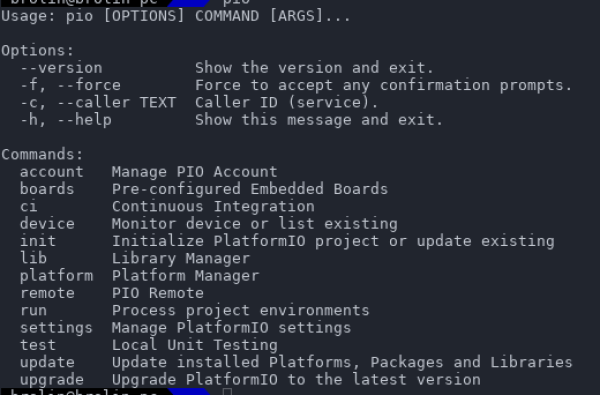¡Esta es una revisión vieja del documento!
Tabla de Contenidos
Documentación Talleres Intefaces DIY con el ESP8266
¿Qué es el ESP8266?
The 8266 is a microcontroller with built-in 2.4GHz WiFi capability. It is cheap, popular, available in different module-only and more-featured boards. It allows simple integration of wireless communications capability to an existing project, and in many cases can act as the sole microcontroller for an Internet-Of-Things (IOT) device. Initially the 8266 was intended to be an add-on to an existing microcontroller system to provide an easy way to connect to Wifi. (This is what “AT firmware” provides). Later the 8266 was able to be programmed directly and as a result development environments such as Arduino, NodeMCU(Lua), Micropython etc have emerged. Compared to a standard Arduino microcontroller (Mega328) the 8266 is a more powerful microcontroller with generally more resources and processing power but with some restrictions/limitations. Most importantly a fairly large, active open-source community has formed around the chip.
ESP8266 Tech Specs
Architecture: Xtensa lx106 CPU frequency: 80MHz overclockable to 160MHz Total RAM available: 96KB (part of it reserved for system) BootROM: 64KB Internal FlashROM: None External FlashROM: code and data, via SPI Flash. Normal sizes 512KB-4MB. GPIO: 16 + 1 (GPIOs are multiplexed with other functions, including external FlashROM, UART, deep sleep wake-up, etc.) UART: One RX/TX UART (no hardware handshaking), one TX-only UART. SPI: 2 SPI interfaces (SPI/HSPI) (one used for FlashROM). I2C: No native extenal I2C (bitbang implementation available on any pins). I2S: 1. Programming: using BootROM bootloader from UART. Due to external FlashROM and always-available BootROM bootloader, ESP8266 is not brickable. WiFi (interface): 1 shared controller, supports 2 interfaces - AP (Access Point, 4 client limit) and STA (Station/Client Mode) WiFi (security): Open, WEP, WPA/WPA2, limited support for 802.1x/WPA2-Enterprise
Sounds too good to be true! Are there any cons to this device?
Processor: The 8266 has a single core, and must run a WiFi & TCP/IP stack in addition to your code. This means that you can't monopolize the CPU (i.e. long, blocking code) otherwise bad things can happen (8266 can crash or reset by the watchdog).
RAM: Another constraint is amount of available RAM. The 8266/lx106 has 96KB total available RAM. After the TCP/IP stack and other underlying SDK code, this leaves about 50KB for the user. If you're using a framework like Arduino, Sming, or NodeMCU, this drops down even more, to something in the ballpark of ~20-30KB.
GPIOs: One of the more obvious limitations of the 8266 is the amount of GPIOs (General Purpose Input/Outputs) available. Depending on the specific ESP8266-based module you have this could be anywhere from 3 available IOs to ~12. Remember the Max current for a GPIO pin is 12mA.
Entorno de desarrollo platformio
http://platformio.org/get-started
“PlatformIO is an open source ecosystem for IoT development Cross-platform IDE and unified debugger. Remote unit testing and firmware updates” http://platformio.org/
PlatformIO Core is a heart of whole PlatformIO ecosystem and consists of
- Multi-platform Build System
- Development platform and package managers
- Library Manager
- Library Dependency Finder (LDF)
- Serial Port Monitor
- Integration components (Cloud & Standalone IDE and Continuous Integration).
PlatformIO Core is written in Python 2.7 and works on Windows, macOS, Linux, FreeBSD and ARM-based credit-card sized computers (Raspberry Pi, BeagleBone, CubieBoard, Samsung ARTIK, etc.).
PlatformIO Core provides a rich and documented Command Line Interface (CLI). The other PlatformIO-based software and IDEs are based on PlatformIO Core CLI, such as PlatformIO IDE. In other words, they wrap PlatformIO Core with own GUI.
tomado de http://docs.platformio.org/en/latest/core.html
Project Configuration File platformio.ini http://docs.platformio.org/en/latest/projectconf.html
The Project configuration file is named platformio.ini. This is a INI-style file.
platformio.ini has sections (each denoted by a [header]) and key / value pairs within the sections. Lines beginning with ; are ignored and may be used to provide comments.
There are 2 system reserved sections:
- Base PlatformIO settings: Section [platformio]
- Build Environment settings: Section [env:NAME]
The other sections can be used by users, for example, for Dynamic variables. The sections and their allowable values are described below.
Dynamic variables: Dynamic variables/templates are useful when you have common configuration data between build environments. For examples, common build_flags or project dependencies lib_deps.
Section [platformio] env_default, home_dir, lib_dir, libdeps_dir, lib_extra_dirs, src_dir, envs_dir, data_dir, test_dir, boards_dir
Section [env:NAME] A section with env: prefix is used to define virtual environment with specific options that will be processed with platformio run command. You can define unlimited numbers of environments.
Ecosistema de librerías
Hundreds Popular Libraries are organized into single platform with advanced search by keywords, missed or known headers, etc.
elementos básicos del rompecabezas
- Sensores
- Actuadores Físicos o virtuales
- Tx/Rx de datos Inalámbrica o por cable
¿Para qué lo podemos usar?
Biostation

Automator




